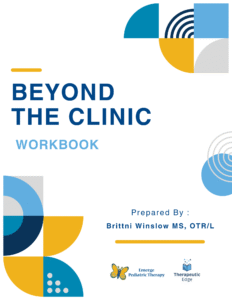Working Memory: Executive Function Skill
Executive function difficulties commonly come along with (are co-morbid with) many disorders. What are executive function skills…..
.Check out our earlier blog post here for 5 quick facts. Children who have been diagnosed with: ADHD, learning disabilities, autism, sensory, auditory, among many others experience dysfunction in working memory. What IS this skill?
Our brains need to remember information in order to use it in a functional way. When you remember a phone number or the spelling of someone’s last name in order to store it in your phone, you do not need to commit the information into your long-term memory. You simply need to remember it for a brief and fleeting moment of time in order to use it. Since it’s not critical to your body’s survival, there’s no need to store it. Similarly, children use their working memory when copying information from the Smartboard to their paper. They read a chunk of information and repeat it in their heads as they transfer that information to their notes. If you consider that children use the same process in order to complete a word problem in math class. The order of operations, doing ‘mental math,’ OR remembering if the problem calls for multiplication, division, etc. is critical in order to get the correct answer.
Here’s more information about how children use working memory from Understood.org.Here are 5 ‘Out of the Pocket ‘strategies for you:
Executive function consists of so many skills. They begin to develop as young as SIX months old! We think about them in older kids but it’s important to work on skills during early intervention, in preschool, and in K-12 grade. As a long-time OT, I’ve created a new model called the Train Model to help clear up executive function and help kids to visualize their journey to success!
1) Let your child teach you!
Kids love to reverse roles and by teaching you the skill, they retain more information. As a homeschooling mother (and OT) I use this technique daily. Encourage your child to write on the board, draw pictures, act things out, and demonstrate concepts to you. This adds fun and employs many brain pathways by adding visuals, movement, and excitement to learning!
2) Play card games.
Games such as Uno, Old Maid, and Go Fish are excellent for children who need to improve working memory. In order to be successful at the games, children must remember who has a specific card or in which order cards were played. If a child is just beginning this skill, play ‘open-handed’ where everyone shows their cards. Encourage kids to keep their eyes on the card they need. To make it more difficult, use words such as, ‘Now, use the eye in your brain or mind’s eye to take a pretend picture of the card and remember it.’
3) Reduce the memory load/expectations.
Ask your school for accommodations that break information down into smaller chunks. Provide single commands vs. multi-step ones. Use a peer buddy for note-taking so that each child can share information. One of the best solutions is to request a copy of the teacher’s notes so that students can highlight critical information as it’s taught in class.
4) App up!
Here’s a list of apps that work specifically on working memory. We receive no compensation for any of them.
Click HERE for list.5) Use graphic organizers and visual charts.
I always encourage both my children and my clients to begin all assignments by using a visual. They can make their own or use those provided on websites such as
Do2Learn.
Remember that scaffolding means building much support under a student in order to help him to reach his goals. According to the glossary of education reform, “The term itself offers the relevant descriptive metaphor: teachers provide successive levels of temporary support that help students reach higher levels of comprehension and skill acquisition that they would not be able to achieve without assistance. Like physical scaffolding, the supportive strategies are incrementally removed when they are no longer needed, and the teacher gradually shifts more responsibility for the learning process to the student.”
Remember that the more the student practices these strategies, the better the results will be. Working memory is a skill used throughout the lifespan and not only when we are children. As with any skill, the earlier we work to build strong pathways, the better the outcomes. Let children have fun while working for the best success!




